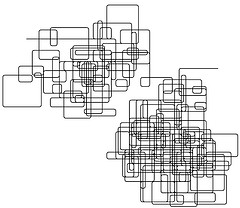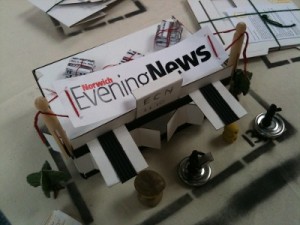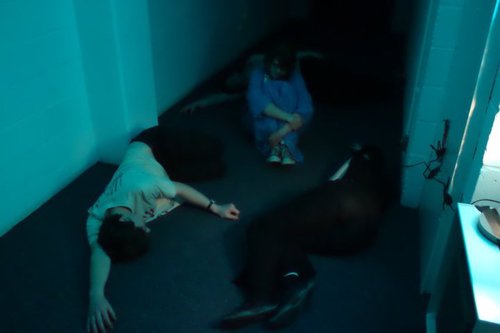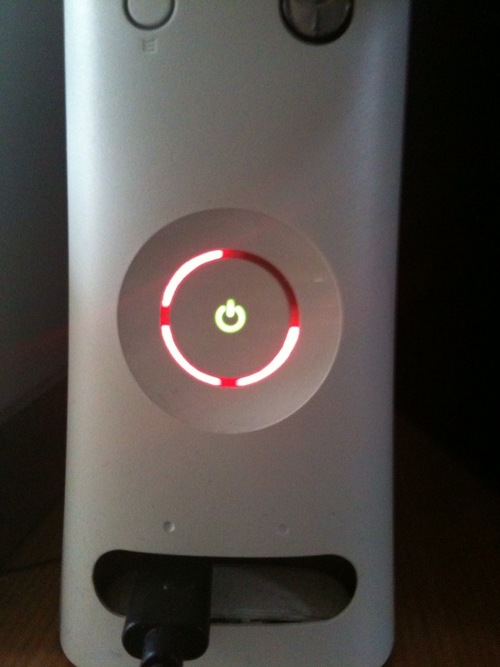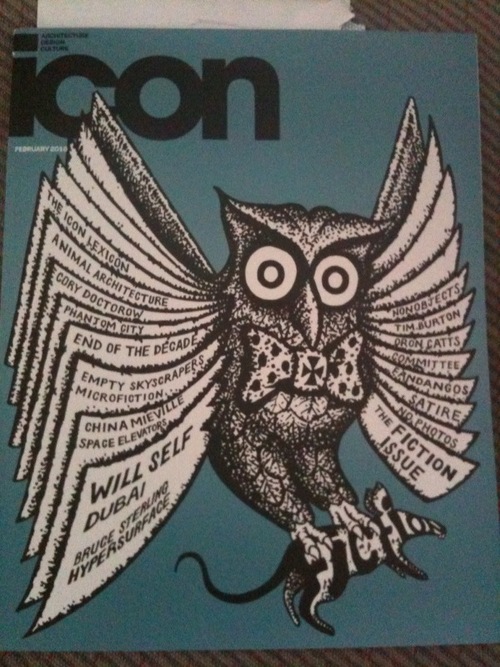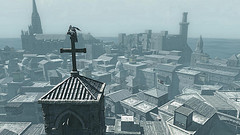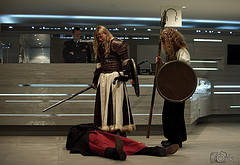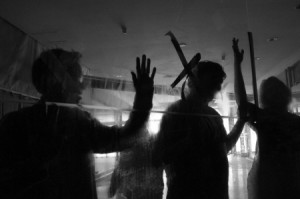Alison Gow recently wrote an excellent post suggesting that newsrooms should get rid of the dummy – the page plan that tells print new teams what space we need to fill in the paper and where.
She said:
Everywhere I’ve worked it’s been called something different – The Book, The Plan, The Dummy, the Flatplan – but recently I’ve started wondering if it should be called The Box, because we think inside it.
… the HOW of filling a newspaper can become more absorbing and demanding than the WHAT …
…I would love to hear the phrase ‘How many words do you want?’ replaced with ‘How do you want this told?’ Is that happening on any editorial floors in the UK’s regional press yet? I’d love to know – because that really would be a converged newsroom.
I’d love to know too. As a general print journalist without an official specialism – and as a trainee, too – I’m not yet at the stage where the demands of the dummy consume my day as much as they do the content editors who have to fill its hungry boxes.
But the demands are becoming more apparent. We’re in the process of switching from a Microsoft Word-based CMS to Atex, built around InCopy and InDesign – and designed to allow reporters to write directly onto the page.
In effect, that means many stories have to be written to an exact length. Things weren’t particularly flexible for us before – we were writing to imaginary boxes 30cm or 8cm or sometimes 450 words long – but we could tweak our stories if we discovered they were “worth less” than we thought. That’s still going to be possible, but not as easy. Instead of writing the story to whatever length reporters felt was best and letting subs pick the right story lengths to fill the page, we’re now starting to see a situation where we have to work out how long our story will be before we begin to write it and set pen to paper.
It’s a different way of working and it may well suit some journalists better than it does me. But for me, the psychological impact of writing a story into a box is that I find myself stretching stories to fit, squeezing an extra quote or two in or lopping off a few facts.
And I have to change that. If stories are too long or too short then they’re in the wrong box, and I have to move them to fit. But that process has illuminated for me the problems of writing for boxes in the first place, especially for the web. If we write the boxed-in print version first, the web version will never flow the way it could given the unlimited space we have there to play in.
Allen Ginsberg once said – though I can’t find a cite online for it, I’m informed by a university tutor – that the length of a line of poetry can be constrained by the paper you write on. (Another beat poet, LeRoi Jones/Amiri Baraka, wrote him a letter on a length of toilet paper afterwards.) His argument was that the words should fit the breath instead.
Boxes constrain and limit us, and force unnatural shapes onto the writing process. No matter how many journalists, editors and newsrooms begin to break away from the dummy and start asking how we can tell stories instead of what shape they should be, if the technology we use keeps dragging us back there, journalists will still be writing 30cm page leads first and thinking about everything else – including innovating for the web – as secondary.

